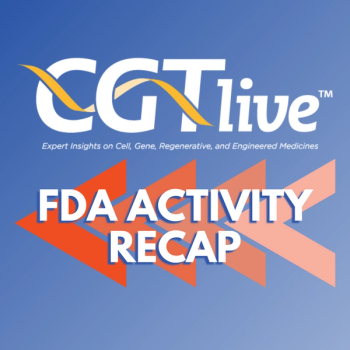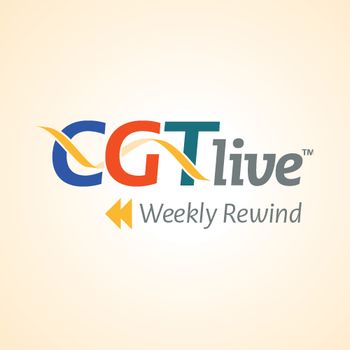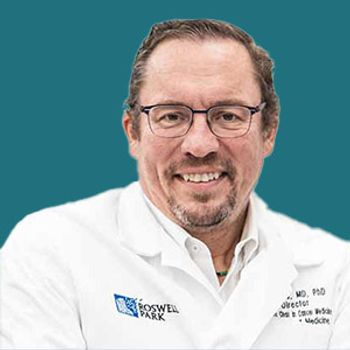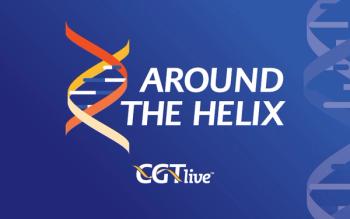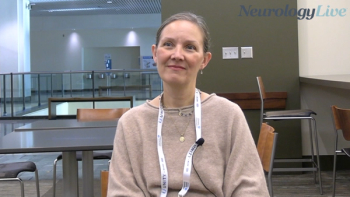
Regeneron’s Gene Therapy DB-OTO Improves Speech Perception in Children With Otoferlin-Related Hearing Loss
Pending talks with the FDA, Regeneron intends to submit a regulatory application for DB-OTO before the end of 2025.
Regeneron’s DB-OTO, an investigational adeno-associated virus (AAV) dual-vector-based gene therapy intended to treat otoferlin (OTOF)-related hearing loss, has improved hearing and speech perception in pediatric patients treated in the phase 1/2 CHORD clinical trial (NCT05788536), according to updated data reported by thecompany at the annual American Academy of Otolaryngology-Head and Neck Surgery (AAO-HNSF) meeting, held October 11 to 14 in Indianapolis, Indiana, and simultaneously published in the New England Journal of Medicine (NEJM).1,2
Among 12 patients treated in the pivotal CHORD study, 11 patients (14 of 15 treated ears) displayed clinically meaningful improvements in hearing, with 3 of the patients showing normal hearing levels. As such, the study met its primary end point, which was set at 9 patients showing improvements in hearing at a threshold of 70 decibels hearing level or less (dBHL), as evaluated at 24 weeks posttreatment by behavioral pure tone audiometry. Regeneron noted that the patients responded within weeks of receiving the gene therapy.
Furthermore, 6 of the treated patients showed the ability to hear soft speech without device assistance and 3 achieved the ability to detect whispers. Regeneron also pointed out that 1 patient who did not meet the criteria for the primary end point later showed improvement to “nearly normal” hearing sensitivity at 48 weeks posttreatment. In addition, the company stated that an auditory brainstem response at 90 dB or less, which constituted a key secondary end point for the study, was seen in 9 patients.
For 8 of the patients treated in the study who reached 36 weeks or more of follow-up, continued improvement or stability in hearing improvements was observed for up to 72 weeks. Regeneron also noted that in the 3 patients who reached at least 48 weeks of follow-up significant improvements in speech development were observed and 1 of the 3 patients was able to identify 1-2 syllable words without visual cues and to respond to distant sounds and speech in areas considered noisy.
“Until now, genetic OTOF-related hearing loss was considered permanent, which is why many of us have dedicated our careers to this field,” CHORD investigator Lawrence R. Lustig, MD, the chair of the Department of Otolaryngology—Head and Neck Surgery at Columbia University College of Physicians, said in a statement.1 “This registrational data set showcases consistent, rapid, and robust responses to DB-OTO, and for those followed to later timepoints, we’ve seen hearing stability as well as continued improvement in understanding of speech. These results are even more poignant when viewed by the families – as one of the parents said, their situation is now ‘unimaginable’ from one year ago. This truly represents a new era in the treatment of hearing loss.”
With regard to safety, both DB-OTO and the surgical admistration procedure were characterized as “well-tolerated.”1 No adverse events (AEs) deemed related to DB-OTO itself occurred, although transient postsurgical vestibular AEs such as nystagmus, nausea, dizziness, and vomiting, all of which were fully resolved, were reported in some patients. Furthermore, a serious AE (SAE) deemed related to a cochlear implant surgical complication and SAE deemed related to a vaccination were reported on-study.
“Most participants had dramatic improvements that ended the need for cochlear implants and enabled natural acoustic hearing,” first author Vassili Valayannopoulos, MD, the executive medical director of Regeneron, and colleagues wrote in the NEJM paper.2 “None of the untreated ears showed spontaneous improvement, a finding consistent with those from our natural history benchmark analysis. By 24 weeks after treatment, several participants had hadprogression from an inability to hear a gas-powered lawn mower to the ability to detect whispers, which highlights intact inner ear structures that were amenable to gene therapy. Contrary to prevailing views that the efficacy of OTOF gene therapy might be limited to participants who receive it early in life, we observed benefits when DB-OTO was given to participants as old as 16 years of age.”
Pending talks with the FDA, Regeneron intends to submit a regulatory application for DB-OTO before the end of 2025. The product has previously received orphan drug designation (ODD), rare pediatric disease designation, fast track designation, and regenerative medicine advanced therapy designation from the FDA, as well as ODD from the European Medicines Agency.
CGTLive®
“This is going to be big for the field,” Lustig told CGTLive. “Now that we have a treatment for genetic deafness, our hope is that this will spur universal genetic testing in all kids with hearing loss, which will give us a much better overview of the genetic landscape of hearing loss in the world. Right now, we know there's a few genes that when they're mutated will lead to deafness, but there's many others for which it's not so clear.”
REFERENCES
1. DB-OTO results in the New England Journal of Medicine showcase dramatic and sustained improvements in hearing and speech perception in children with profound genetic hearing loss. News release. Regeneron Pharmaceuticals, Inc. October 12, 2025. Accessed October 13, 2025. https://investor.regeneron.com/news-releases/news-release-details/db-oto-results-new-england-journal-medicine-showcase-dramatic
2. Valayannopoulos V, Bance M, Carvalho DS, et al. Db-oto gene therapy for inherited deafness. N Engl J Med. Published online October 12, 2025:NEJMoa2400521. doi:10.1056/NEJMoa2400521
3. Lustig L, Bance M, Ishiyama A, et al. Intracochlear administration of DB-OTO gene therapy in pediatric patients with profound hearing loss due to otoferlin mutations: the CHORD phase 1/2 open-label trial. Presented at: ASGCT Annual Meeting 2024, May 7-10; Baltimore, Maryland. Abstract #10.
Newsletter
Stay at the forefront of cutting-edge science with CGT—your direct line to expert insights, breakthrough data, and real-time coverage of the latest advancements in cell and gene therapy.

